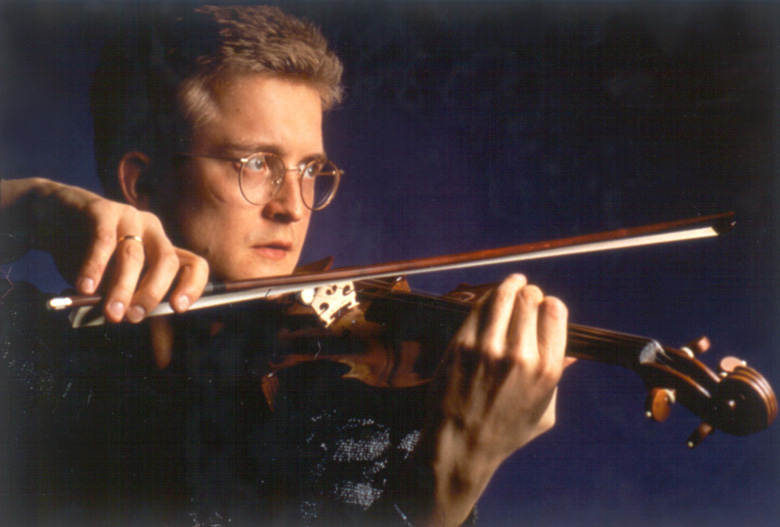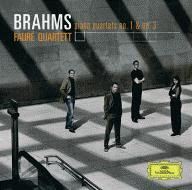Christian Tetzlaff & Esa-Pekka Salonen perform Szymanowski's Violin Concerto No 1
with the New York Philharmonic at Avery Fisher Hall
 Christian Tetzlaff (pictured) joins Esa-Pekka Salonen and the New York Philharmonic in a performance of Szymanowski's Violin Concerto No 1 at Avery Fisher Hall May 14th. While much of the world was at war during the composition of Karol Szymanowski’s Violin Concerto No. 1, the sounds therein give no indication of such turmoil. Equally at home in repertoire from Bach to the Romantics, and renowned for his interpretations of new music, Christian Tetzlaff has been aptly described as "brilliant and inquisitive" by The New York Times. The concert is comprised of 20th century music from Northern Europe featuring pieces by Witold Lutosławski (Poland), Karol Szymanowski (Poland) & Jean Sibelius (Finland).
Christian Tetzlaff (pictured) joins Esa-Pekka Salonen and the New York Philharmonic in a performance of Szymanowski's Violin Concerto No 1 at Avery Fisher Hall May 14th. While much of the world was at war during the composition of Karol Szymanowski’s Violin Concerto No. 1, the sounds therein give no indication of such turmoil. Equally at home in repertoire from Bach to the Romantics, and renowned for his interpretations of new music, Christian Tetzlaff has been aptly described as "brilliant and inquisitive" by The New York Times. The concert is comprised of 20th century music from Northern Europe featuring pieces by Witold Lutosławski (Poland), Karol Szymanowski (Poland) & Jean Sibelius (Finland).
Lutosławski had taken folk material and, by transforming it into magnificent symphonic sonorities, had placed his personal stamp on it. The Concerto for Orchestra is cast in three movements: the Intrada is constructed in an “arch” form with massive climaxes at the midway point; the Capriccio notturno e Arioso, where strings and winds form bookends around a slower section for the brasses; and the vast finale that unifies the first two movements. It begins with an 8-measure passacaglia on a folk theme that is repeated more than a dozen times, always building in intensity, and concludes with a Toccata and Chorale. Listen for a reference to a fellow-sufferer under the Socialist regime, as Lutoslawski embeds Shostakovich’s signature monogram, DSCH (notated in music as D, E-flat, C, B-natural) in the Toccata. The coda provides a powerful and dramatic conclusion to this 20th century masterpiece, which has become Lutoslawski’s most admired and most popular work.
Jean Sibelius revised his Fifth Symphony several times over the course of four years. Despite struggles with health, alcoholism, finances, and political turmoil, Sibelius created this masterpiece—one of the great late-Romantic symphonies—that strongly resonates with audiences. He once described his approach to composing like this: “It is as if the Almighty had thrown down the pieces of a mosaic from the floor of Heaven and told me to put them together.” It begins somewhat mysteriously with an arching theme from the horns, underscored by timpani rolls; in the middle movement listen for a simple theme that highlights pizzicato playing from the strings. The ending of the Fifth is surely one of the most glorious, most affirmative expressions in all of Sibelius works. The final moments are astonishing: after the exultant washes of sound comes a moment of utter silence followed by six hammered chords, each separated from the next by what seem stunning silences, till the final one brings resolution.
“In a deep valley again. But I begin already dimly to see the mountain that I shall certainly ascend. God opens his door for a moment and his orchestra plays the Fifth Symphony.” - Jean Sibelius
Esa-Pekka Salonen is renowned for his interpretations of contemporary music, and has given countless premieres of new works. He has led critically acclaimed festivals of music by Berlioz, Ligeti, Schoenberg, Shostakovich, Stravinsky, and Magnus Lindberg — who will become the New York Philharmonic’s Composer-in-Residence beginning in September 2009. Mr. Salonen’s major awards include the Siena Prize by the Accademia Chigiana in 1993, the first conductor ever to receive it; the Royal Philharmonic Society’s Opera Award in 1996, and the Society’s Conductor Award in 1997. In 1998 he was awarded the rank of Officier de l’Ordre des Arts et des Lettres by the French government. In May 2003 he received an honorary doctorate from the Sibelius Academy in Finland and in 2005 the Helsinki Medal. Musical America named him its Musician of the Year 2006.
Mr. Salonen is also a composer whose works have been performed worldwide. The New York Philharmonic commissioned and gave the World Premiere of his Piano Concerto in February 2007, performed by Emanuel Ax and conducted by Mr. Salonen at his last appearances with the New York Philharmonic.
Violinist Christian Tetzlaff is known for performances and recordings of a broad spectrum of the repertoire, ranging from Bach’s unaccompanied sonatas and partitas to 19th-century masterworks by Mendelssohn, Beethoven, and Brahms, and from 20thcentury concertos by Bartók, Berg, and Shostakovich to world premieres of contemporary works. He has appeared with the orchestras of New York, Chicago, Cleveland, Boston, Philadelphia, San Francisco, Los Angeles, and Toronto, among many others, and with major European ensembles including the Berlin, Vienna, and Rotterdam philharmonic orchestras, London Symphony Orchestra, Orchestre de Paris, and Amsterdam’s Royal Concertgebouw. He also collaborates frequently with distinguished artists in chamber music performances and is the founder of the Tetzlaff Quartet.
Tickets range from $30 to $109 and are available online at: nyphil.org
Concert Information
Thursday, May 14, 7:30pm
Sat, May. 16, 8:00pm
Lutoslawski Concerto for Orchestra
Szymanowski Violin Concerto No. 1
Sibelius Symphony No. 5
Esa-Pekka Salonen Conductor
Christian Tetzlaff Violin
Pre-concert talks are an hour prior to each performance

Comments